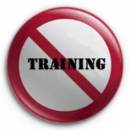If you are a subject matter expert in anything, many believe you are going to make a great trainer. Although knowing something about your content is a vital part of being a great trainer, it is only half the battle. Learning how to facilitate and create a learning environment is what helps adult learners actually learn. Failure to understand these principles is what makes a poor trainer.
Here are my quick tips for evaluating your trainers and determine if they have the right skills. Start off by observing the trainer from the back of the room. Keep your mouth closed, and just take notes. Look for these things during your observation time:
- How long does your trainer talk before getting participants involved? If the sound of their voice is more important than getting participants involved and engaged, then you have a presenter, not a trainer.
- Watch the reaction and next steps taken when a participant asks a question. Do they actually answer the question, or do they dance around it? If it appears they don’t know the answer, do they admit it to the participant and promise to get the answer, or do they fake it? Lastly, do they ask the person if the answer they gave was what they were looking for, like “did that answer your question?”
- After participants finish an exercise (group discussion, role plays, teach backs) does the trainer debrief the exercise, or just say great and move on? The real learning comes from debriefing what was just experienced, and yet a poor trainer either doesn’t know how to conduct a debrief, or does not see the benefit.
- Does the trainer know how to set up an exercise? Before having participants begin any exercise, a good trainer will explain what is going to happen, why they are doing the exercise and asks questions before they let people begin.
- Does the trainer know their content, or are they just a really good reader of their PowerPoint slides?
For the most part, if your trainers can pass this quick assessment, then they have been trained well. If not, it is time to get them into training for trainers.
While everyone is capable of being a good trainer, no one is born with trainer skills. I’ve always said that a poor trainer can blow a really well designed program, and a really good trainer can save a poorly designed program. In the end, the better the trainer, the better the learning!
Oh, and if your training manager happens to be a poor trainer, they are in a leadership role they cannot do well at. Fix this issue ASAP!
